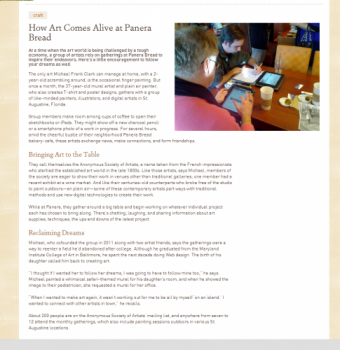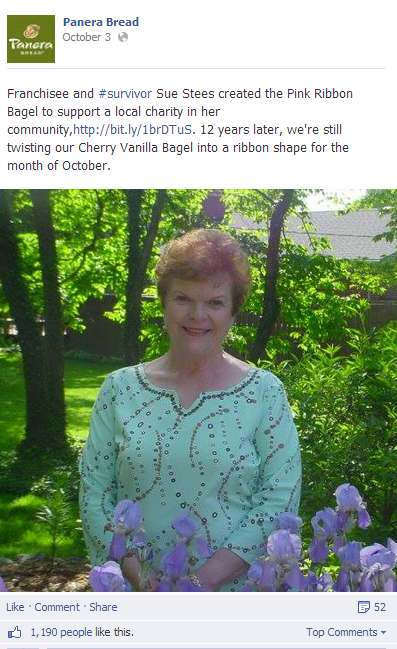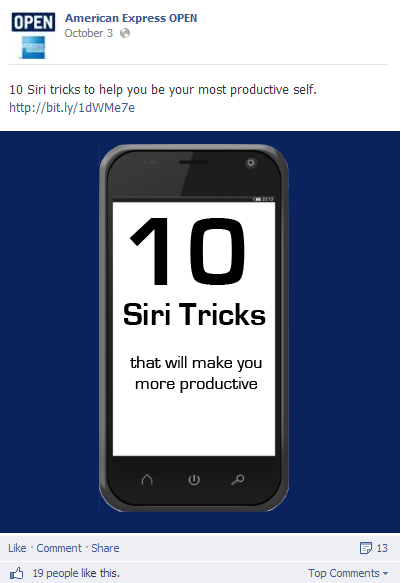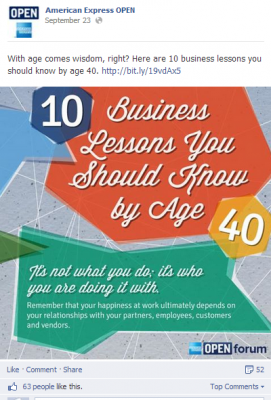Tag Archives: brands
This year’s sessions during Social Media Week Chicago served as an excellent reminder for content strategists and marketers alike when looking to craft compelling brand stories and content marketing. Here are a few key takeaways: 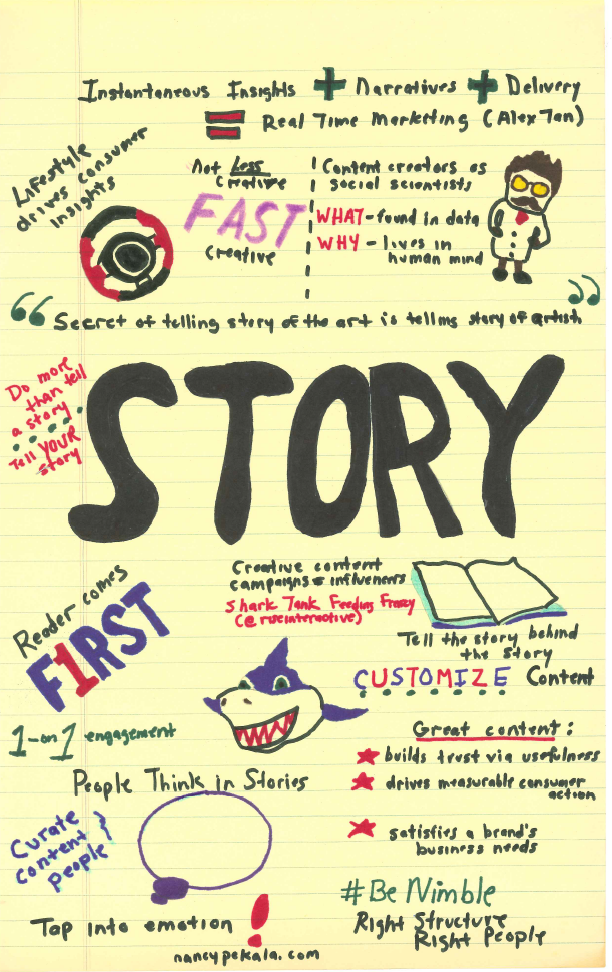
- Behave like a Social Scientist.
Human beings naturally think in terms of stories. You can understand how consumers are likely to behavior through the use of personal, emotion-filled content and conversations. WHY lives in the human mind while WHAT can be found in data. - Lifestyle trumps demographics for consumer insights.
Demographics alone won’t give you what you need to understand the motivations of consumers and customers. Instead content and marketing is more effective when it’s tied to consumers’ life stages and lifestyles. Brands like Cheerios do an excellent job of targeting multiple life stages. - The Reader comes FIRST.
When crafting content of any kind, think of the reader first, last and always. Quality counts more than quantity and any content developed should be created first for the end user, not the search engines. - Cultivate a NIMBLE organization.
To be able to effectively take advantage of real-time marketing opportunities, you must have a flexible, nimble organization. Make sure you have the right structure and the right people in place. - Focus on creating GREAT content.
To get the attention of consumers who are bombarded with marketing messages and content, make sure you are creating great content that builds trust through usefulness, drives measurable consumer action and satisfies your brand’s business needs. - Do more than tell a story; tell YOUR story.
Share insights about who you really are as a brand. Customize content and tell the story behind the story.
See Related Posts:
Modern Day Show and Tell: The Art of Storytelling with Content Curation
Can You Feel It? Why Emotion is Driving Brand Story Selling
Putting Some Teeth into your Influencer Campaigns
Connections, Conversations and Creativity Lead to Better Brand Stories
There are some that would have you believe that today’s world in which everyone’s a content producer pushing out 140-character tweets, Instagram selfies and instant Vine videos is responsible for creating an industry characterized by mediocrity and lacking in imagination. But that couldn’t be further than the truth.
In fact, those of us in the content and marketing spaces are not less creative; we’re just working to be more creative at a faster pace.
“We’re in a content marketing arms race,” explained Scott Smith, VP, Content Marketing, Cramer-Kasselt, during a recent Social Media Week Chicago presentation. “It’s not about trying to reach everyone at the most efficient cost. It’s not about impressions, or page views. It’s about quality over quantity and having real conversations with individuals.”
To do that requires that brands tap into their unique culture to do more than just tell a story; they must tell their story in a way that connects with their audiences.
The whole point behind creating content, especially in social media channels, is to connect with people. Thanks to reams of data, brands can effectively talk to individuals. To do that effectively requires that brands understand the reader comes first when developing content.
Before launching any kind of content marketing program, brands need to answer some key questions:
- Who is our audience and who isn’t?
- What do we want readers to do?
- What do readers want from us? Can we provide it?
- What assets do we have—people, places, things?
- How do they talk about us when they think we’re not listening Are we listening?
- What do we have to offer that no one else does?
Armed with this critical information, brands will be better prepared to create really great content that accomplishes three basic goals:
- Builds trust with users through usefulness
- Drives measurable consumer action
- Satisfies a brand’s business needs
Too often brands get hung up on having to create really intellectual content based on research or data. That’s important content to have but it doesn’t always have to be so cerebral. Sometimes it just needs to be entertaining and memorable.
There’s really no excuse for brands not to be able to engage readers with quality content as they have so many sources of content at their disposal. Some common sources of content to consider include:
- How We Got Our Start
Share the story of your brand’s history and the milestones it hit along the way.
- Ideas that Didn’t Make the Cut
New product or service ideas that were nixed can be interesting fodder for brand stories.
- The “Why” behind Business Decisions
Consumers can gain real insights into a brand by learning about the drivers behind key business decisions.
- Key Challenges and How We Overcame Them
Honesty and authenticity are critical to creating engaging brand content. Consumers appreciate hearing about challenges facing a brand and, more importantly, how they worked to overcome them.
- Our Culture and Mission
Stories that exemplify your culture and mission can go a long way in humanizing your brand.
- New Product Uses
Think out-of-the-box and offer consumers ideas for new uses for your products. - Your Causes
Stories about the causes your brand is committed to help to define what you stand for.
- Requests for Feedback
Don’t forget to engage consumers by asking for their feedback, questions or comments about your brand. Follow up with content that responds to that feedback or provides updates.
Creating compelling, quality content is not only helps keep brand engaged with their audiences, but it’s also good news for search engines. Nick Papagiannis, VP, Search Director, Cramer-Kasselt stressed that “Content should be beneficial to your customer, reflective of the brand, and optimized for Google.”
Content that is truly search friendly is optimized for the technology environment, includes the right keywords in the right places and is adequately promoted. Links to new content via social channels is one way to effectively rank higher in the search engines while engaging your audiences.
However, even Matt Cutts, head of Google’s Webspam team, has cautioned, “Never sacrifice the quality of your copy for the sake of search engines.” The reader always comes first.
There are a number of brands today that are maximizing the benefits of a great content strategy. Sephora, for example, has been successful in creating engaging video and Tumblr content. It’s clear Sephora’s strategy is to create memorable, shareable content rather than focus on direct lead generation. The brand has a long-term perspective rather than seeking an immediate return. The strategy is working well for Sephora which boasted a 400% increase in iPad traffic to the brand’s website in 2012 and a 300% increase in shipments via mobile in 2012.
Panera Bread is another brand that generates a variety of content which focuses on creating human connections with its customers. The brand’s website includes a number of “feel good” stories about the role Panera Bread plays in local communities. The popular restaurant chain also highlights the history of its products in an engaging way.

For AMEX Open, a website dedicated to small business networking, content is all about usefulness and creating one-on-one conversations with customers. Backed by 200 expert contributors, the brand’s strategy focuses on delivering content that small business professionals need, providing a forum for them to exchange advice and helping them to make smart decisions.
Are you truly focused on telling YOUR story, or just pushing out content in the hopes of garnering another like or share? Before you hit that publish button, make sure what you’re sharing is advancing your brand story in a personal way that truly connects with your audiences.
Share This
Recent Blog Posts
- International Women’s Day: Taking action to gain traction
- Be a shoulder and a hand: 10 ways to help women in the workplace show up and shine up
- Unfinished Business: Content Marketing’s Role in Cracking the Glass Ceiling
- Lessons Learned from 84 Lumber’s Super Bowl Fail
- Brands Rise Up to Stand Out in Super Bowl 2017
Categories
Blog Post Tags
My Tweets

About Me
Portfolio Categories
Follow Me
Recent Posts
-
International Women’s Day: Taking action to gain traction
The first time I noticed men and women were treated...
-
Be a shoulder and a hand: 10 ways to help women in the workplace show up and shine up
International Women’s Day is an important day of...
-
Unfinished Business: Content Marketing’s Role in Cracking the Glass Ceiling
When it comes to tackling the gender equality issue...
-
Lessons Learned from 84 Lumber’s Super Bowl Fail
84 Lumber got it wrong on Super Bowl Sunday. In fact,...













